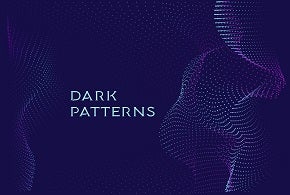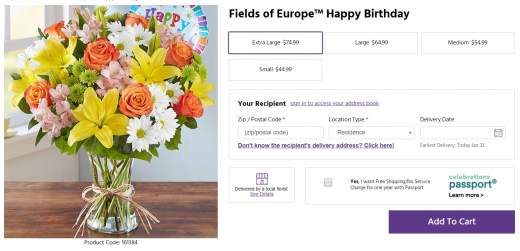Web developers are always trying to give users an honest experience, but as you know, most digital interactions come with a certain risk level. In this article, you will find out what dark patterns are and how to avoid them.
A dark pattern is a user interface that has been designed to trick users into doing things they do not want to do. The dark model was first envisioned by Harry Brignull, with the registration of darkpatterns.org. He said, a dark pattern is “a user interface that has been carefully crafted to trick users into doing things, such as buying insurance with their purchase or signing up for recurring bills.”
Companies use these dark patterns to take advantage of users and hide the real intentions of the site. These dark patterns are dangerous because they can cheat users into buying a product, subscription, or any other thing the company sells, that they do not really want to buy. The cheaters use big fonts to lure people, hoping to attract them from the true content of the site.
In the following sections, we will discuss the most common examples of dark patterns with the aim of informing users and helping them false content in the future.
Roach Motel
Roach motel is another dark web-based tactic based on design tricks that cause users to subscribe very easily but makes it extremely difficult for them to unsubscribe and exit. As a result, users will receive a lot of emails about the company’s products, marketing materials and so on, and the unsubscribe button is very hard to find.
Hidden Costs
Hidden costs are extra items or hidden fees, UI tricks designed to fool web site users. When choosing a particular product that the company sells, you typically go through extra fields to be completed until checkout, where you notice that other unexpected fees, such as taxes, shipping charges and/or the original price of the product have changed significantly.
We’ll be looking at an example of a dark model from Southwest Airlines.
While I’m looking for a round-trip flight from Baltimore/Washington to Boston, showing me more charging deals for my option.
After clicking on the “Continue” button, I realize that the initial price is much higher than the final price. Click on the item “Hide price breakdown” and note that there have been more taxes added to the initial ticket price, and these taxes have not even been explained.
Disguised Ads
As the name suggests, this dark pattern is mainly used in ads that are disguised with other navigation or content models to make users to click on them as often as possible.
Friend Spam
This kind of dark pattern appears when a product requests social media permissions or email permissions to only be used for the desired result. However, unscrupulous companies can use the friends’ list of the user to spam them through a message that claims to be from the initial user.
Misdirection
Misdirection is used when it comes to focusing user attention on one thing, with the intention of distracting your attention from another thing.
Baiting and Switching
Baiting and switching is used when users try to select a specific option on the site, but contrary to expectations, another undesirable thing happens.
Confirm Shaming
Confirm shaming is one of the darkest patterns spread across many sites today. The principle underlying this dark pattern is that the site generates a lightbox asking for the user’s e-mail address to enter in that site.
Forced Continuity
Forced continuity is the same as the above-mentioned models, a dark pattern spread across many sites where website users sign up for a free trial, enter personal details such as credit card information, and at the end of the process, they are charged without being notified, without any warning and without any possibility of giving up or canceling automatic billing.
Privacy Zuckering
Privacy Zuckering was named after the renowned Mark Zuckerberg, being recognized for the first time on the social media platform called Facebook. In this model, users are cheated to convey more personal information than was intended.
Price Comparison Prevention
The online seller makes it impossible to compare the price of an item with another item, not knowing whether it is better to buy the individual item, or the packages offered by them. A concrete example of this model is LinkedIn, which always promotes its Premium plans and offers users other services free of charge, but they never say what is their separate price.
Sneak into Basket
The sneak into basket pattern is often found in online stores and consists of the fact that besides the product you have selected for buying another one miraculously slips into your basket. That’s why it is very important to check your shopping cart before you opt for checkout.
Trick Questions
According to dark patterns, a trick question is an incorrectly formulated question, a blurry question and it is used to confuse users by manipulating them until they realize the error made because of misunderstanding.
Through this dark pattern, you can increase the cost of the original product, as you will see in the example below.
At www.1800flowers.com, you can order beautiful floral arrangements with free shipping. I have entered the postal code, location and date of delivery and of course, I opted for free shipping. After these steps, I found that they added the “12-month passport” in my basket and the final cost of the order increased considerably. So you have to pay close attention to the boxes that have the free shipping option and not fall into their trap.
Conclusion
Unfortunately, these dark patterns are designed to trick users and give them confusing information. If users are educated about these dark methods, they will know how to spot these scams and stay away from them.
As a user or web designer, it is best to stay away from these dark patterns, providing a user-friendly experience and presenting the options in a clear and honest way. Now, after reading this article, you will begin to recognize these dark patterns, and hopefully join the discussions on the web about them.








